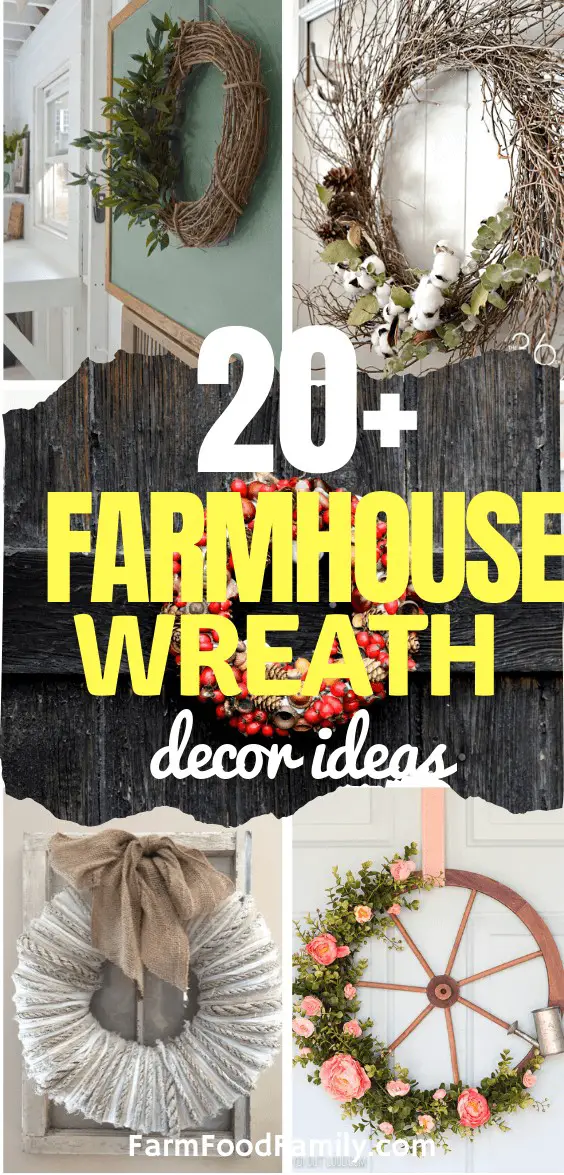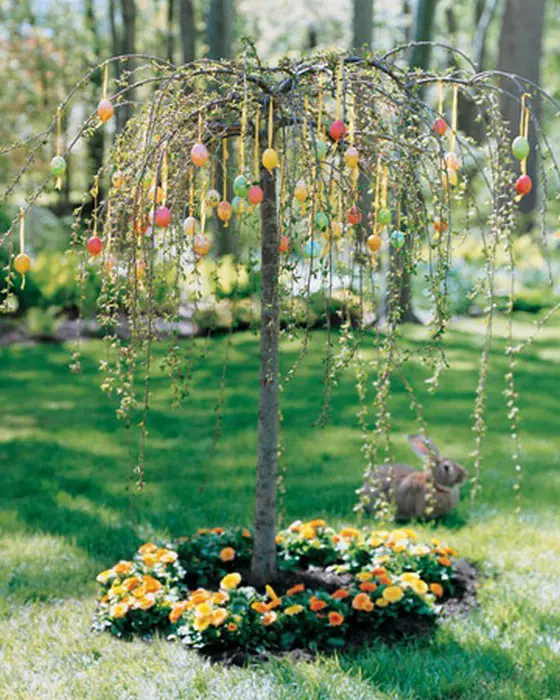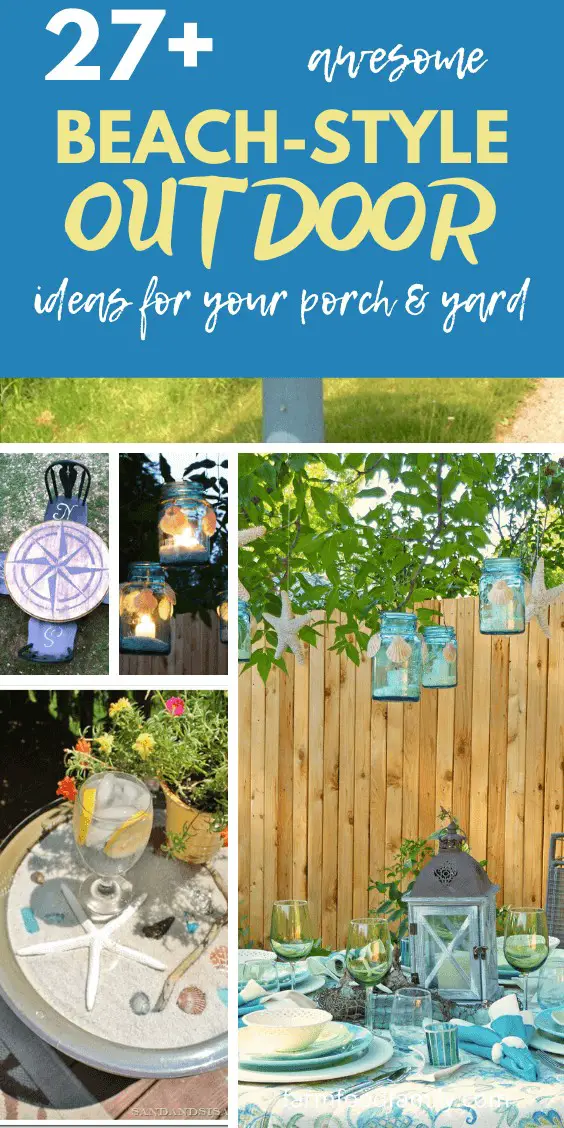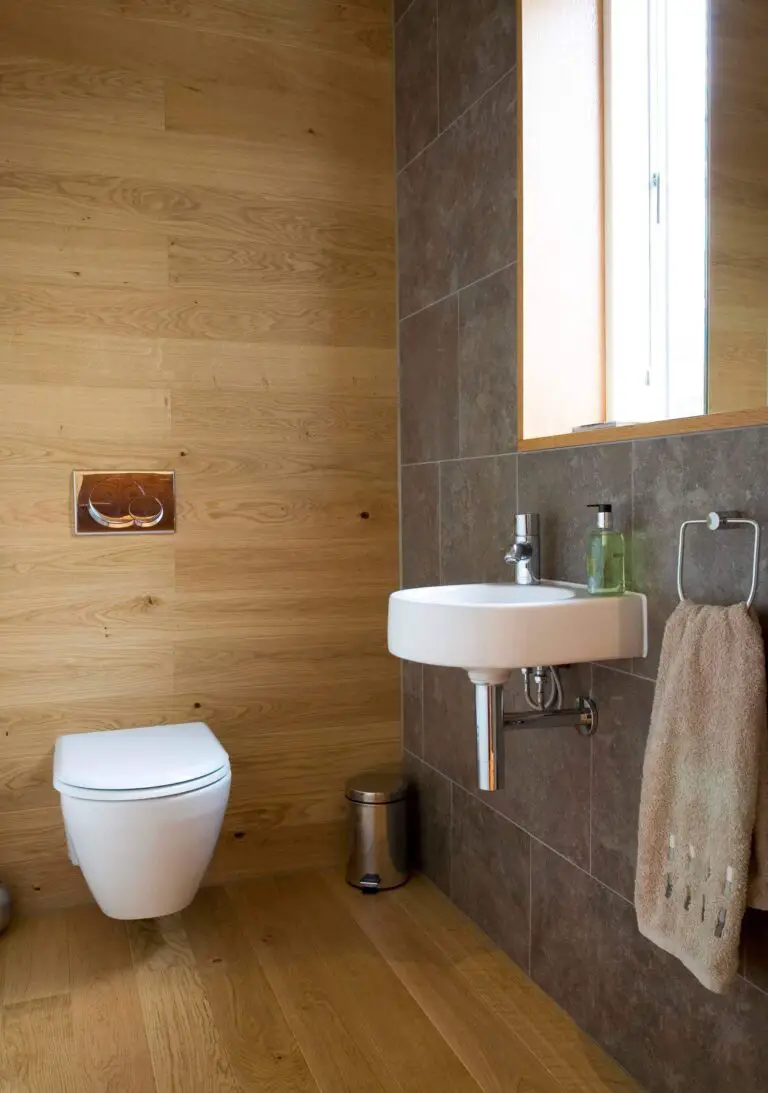What Color Furniture Goes With Gray Flooring? (12 Ideas)
When it comes to choosing a color for your furniture that complements gray flooring, there are many options to consider. Gray is a versatile color that can work well with a variety of styles and colors. For those who want their furniture to stand out, bold colors like red or yellow can create a striking contrast with the neutral gray floor. On the other hand, for a more subtle look, light blues or greens can add a touch of serenity to the space.
Ultimately, the key is to choose a color that complements the style and tone of your home. Some popular options include black, blue, dark gray, green, ivory, oak, pink, purple, red, walnut, and white. When selecting furniture for light gray flooring, consider bold colors like pink or purple to create a pop of color. For darker gray floors, try pairing with lighter colors like beige or cream. And when it comes to grey furniture, it can actually work well with both light and dark gray floors.
Additionally, brown furniture can complement gray flooring, especially if the brown is more on the lighter side. Ultimately, the choice of furniture color will depend on your personal style and the overall aesthetic you want to achieve.
What Color Furniture Goes With Gray Flooring?
Black.
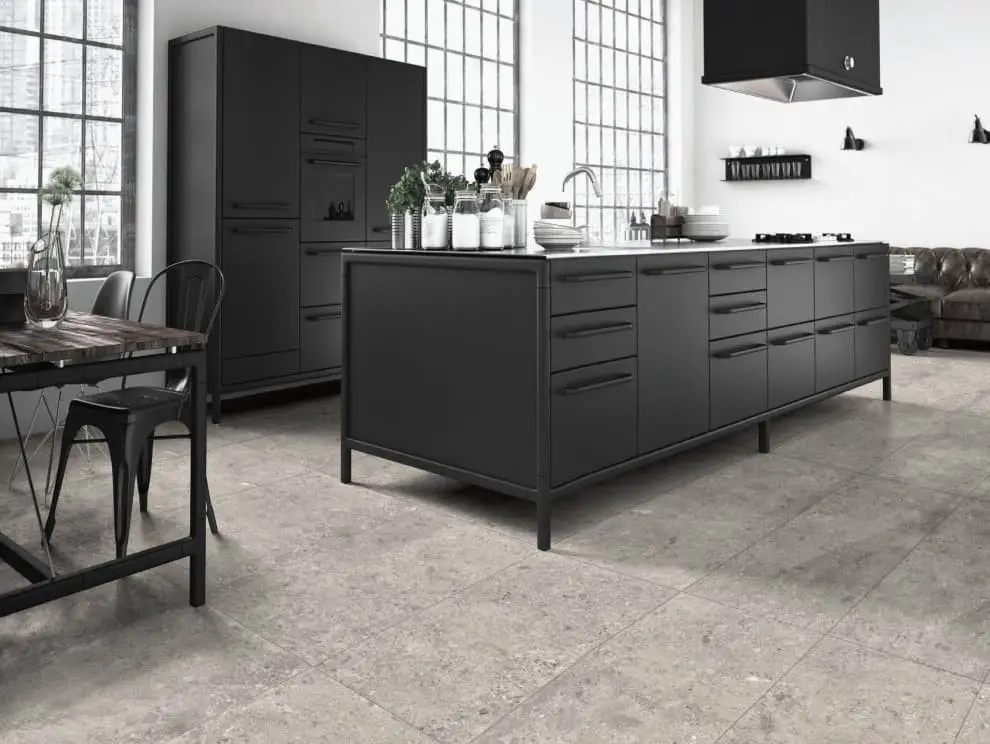
When it comes to choosing furniture, black is often a safe bet that never goes out of fashion. Its versatility also means you can easily find pieces in various styles to match your personal taste. To add some visual interest, consider pairing black furniture with grey flooring for a modern and sleek look. Alternatively, if you’re aiming for a more traditional feel, combining it with dark wood floors can create a sophisticated and elegant atmosphere that’s perfect for any room.
Blue.

Pairing blue with grey flooring is a winning combination that can instantly create a sense of calm and serenity in any room. The soothing quality of blue can be particularly effective at mitigating the harshness of a busy space, making it an excellent choice for living rooms or bedrooms where relaxation is key. For added visual interest, introducing blue as an accent color through accessories or statement pieces can add a welcome burst of energy and personality to your design.
Dark gray.
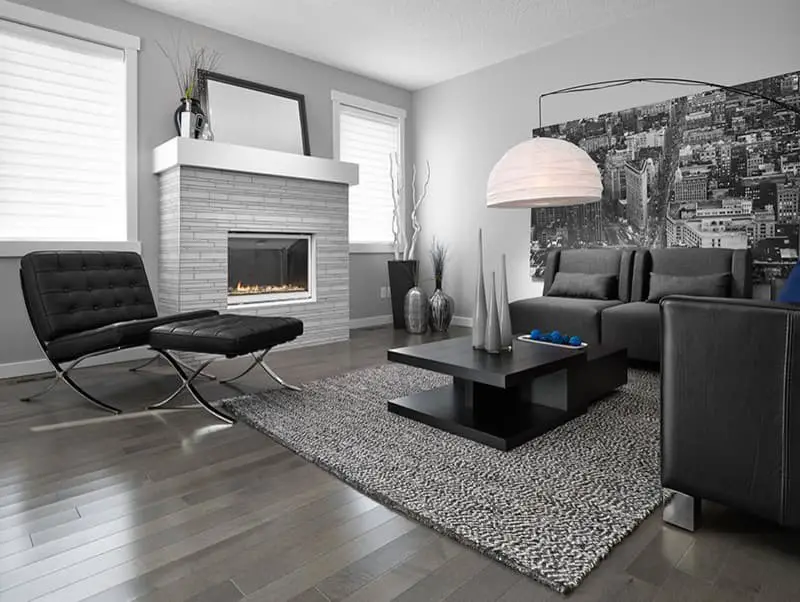
Dark gray, when used in furniture design, offers numerous benefits. Its versatility allows it to effortlessly blend with a wide range of color schemes, creating a harmonious and coordinated look. Additionally, its darker tone makes it less prone to showcasing dirt and stains, reducing the need for frequent cleaning. Furthermore, dark gray’s modern aesthetic can imbue a room with a sense of sophistication and refinement, instantly elevating its overall ambiance.
Green.
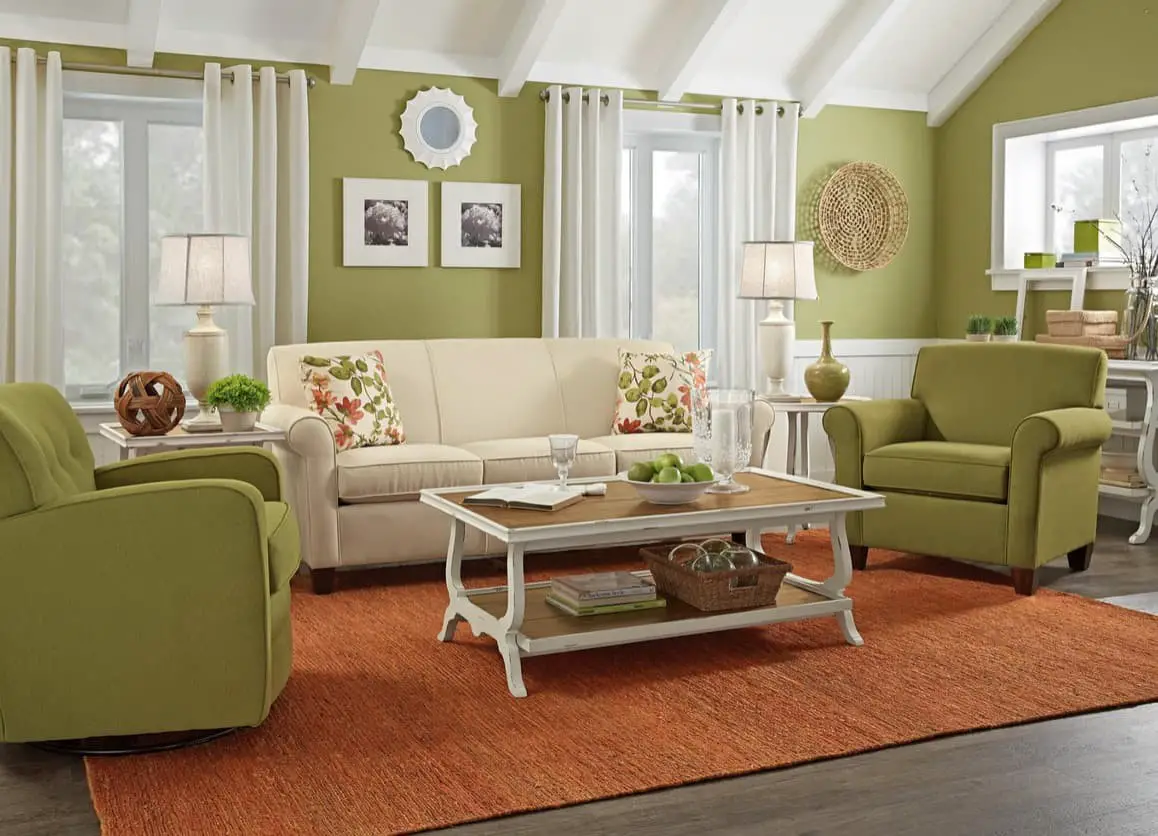
Green, the embodiment of life, growth, and vitality, also resonates with nature’s serenity, hope, and renewal. This harmonious hue, when combined with gray flooring, yields a unique space that effortlessly balances calming and invigorating elements. The synergy between the two colors creates a sense of equilibrium, fostering an atmosphere that’s both soothing and stimulating.
Ivory.
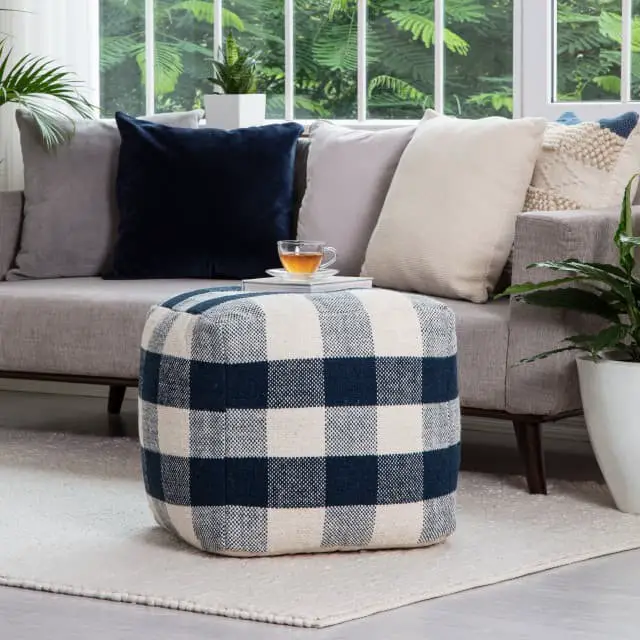
The timeless charm of ivory furnishings is undeniable, as they possess an inherent capacity to elevate the ambiance of any room with their refined and sophisticated presence. For those seeking to imbue their home with a sense of understated luxury, incorporating ivory-hued pieces into their decor is a surefire way to achieve this end.
Oak.
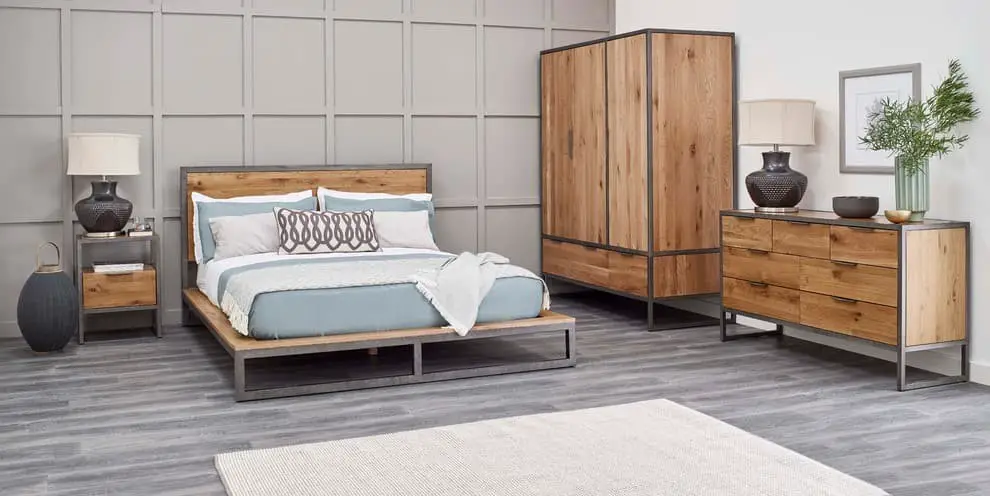
When pairing oak furniture with gray flooring, a harmonious and cozy atmosphere is effortlessly created. The classic combination of warm wood tones and cool gray hues produces a sense of balance and visual appeal. To further enhance the space, introducing black or white accents through furniture can create striking contrast that draws attention to the gray flooring, creating a dynamic and engaging environment.
Pattern.
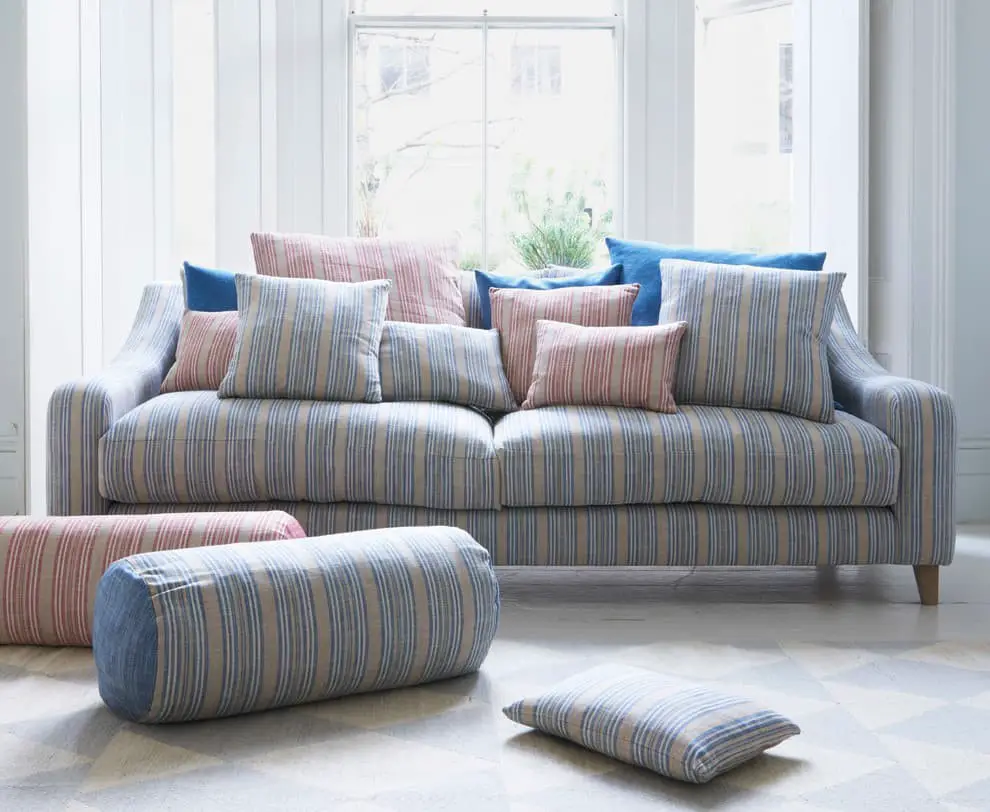
When gray dominates your flooring’s aesthetic, it’s essential to introduce visual interest through strategic placement of patterns. One effective approach is to incorporate furniture pieces featuring geometric shapes or unique textures. This will create a sense of visual balance and prevent the space from feeling monotonous. Additionally, accessories such as area rugs and throw pillows can be leveraged to add patterned elements that don’t overwhelm the senses.
The key is to strike a harmonious balance between the different design elements, ensuring the overall atmosphere remains cohesive yet engaging.
Pink.
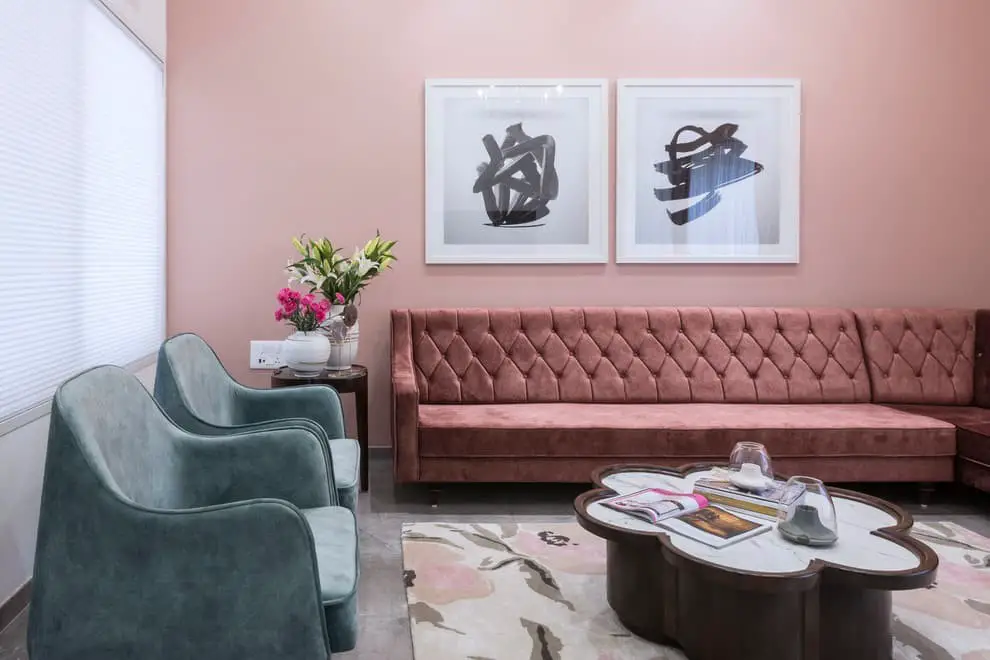
Infusing a touch of whimsy into your living space is just a matter of adding the right pops of color. And what better way to do so than with a bold splash of pink? Not only does this vibrant hue bring an undeniable sense of personality to any room, but it also pairs delightfully with gray flooring, creating a harmonious and visually appealing combination.
Purple.
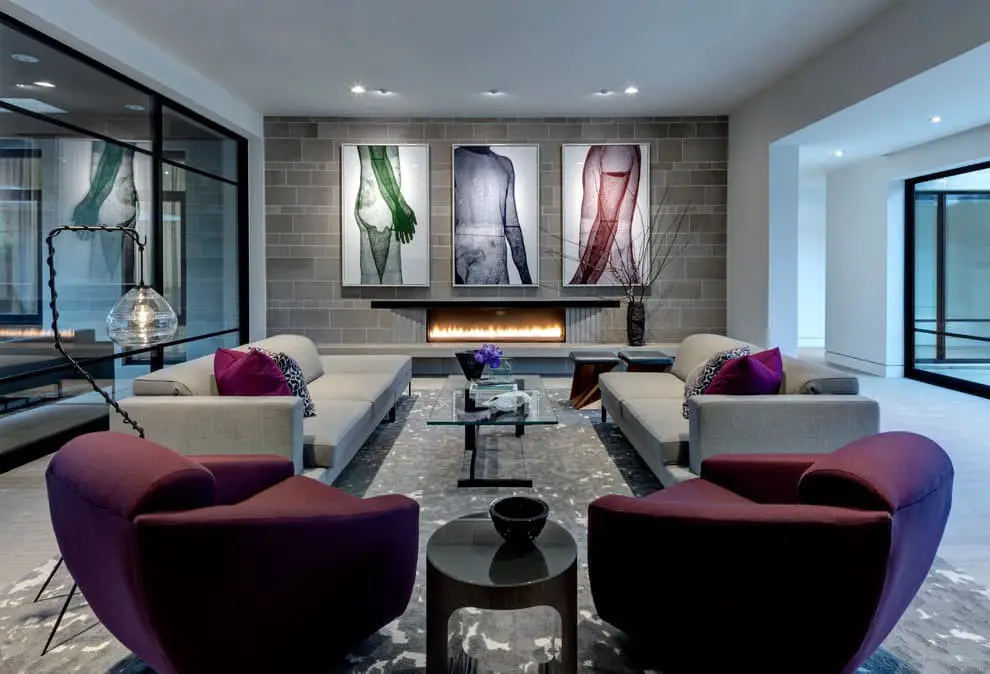
Gray flooring provides a sleek backdrop for the soothing hue of blue-green. This calming combination creates an illusion of increased space, making even the most compact rooms appear more expansive. Furthermore, the versatility of this color allows it to seamlessly integrate into various design styles and applications, further enhancing its appeal.
Red.
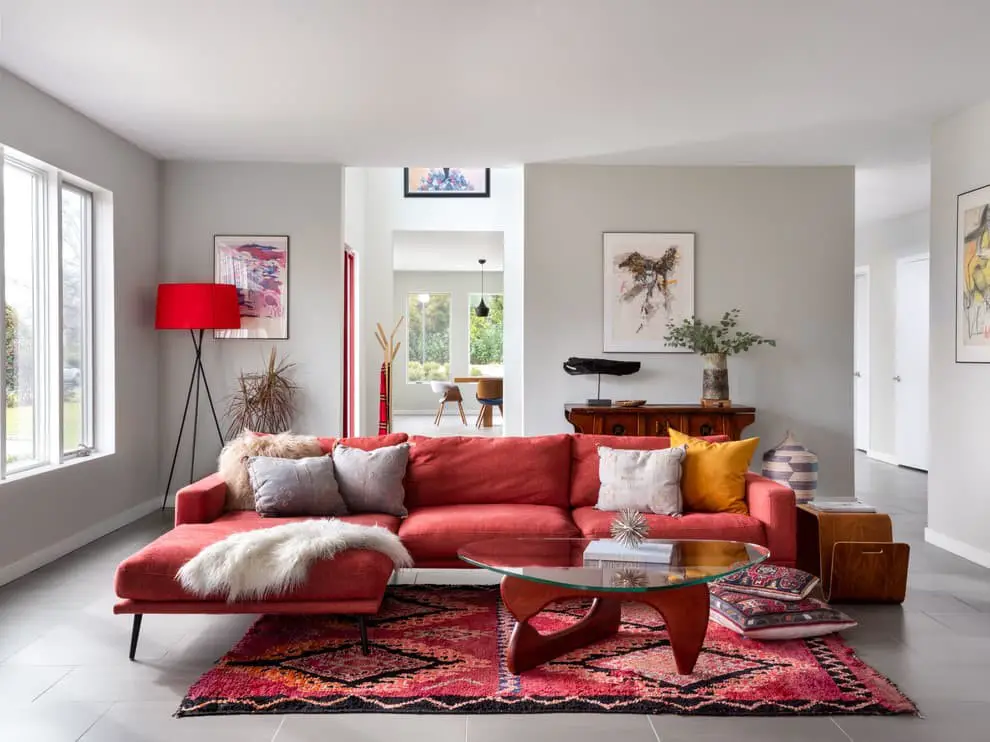
While red might be a bit too loud for some, it’s a color that can still pack a punch without overwhelming the senses. Its subtlety makes it an ideal choice for injecting personality into any room, particularly when paired with neutral tones like gray flooring. For those seeking to make a bold statement without going over the top, red furniture is a fantastic option. Its vibrancy adds depth and visual interest to the space, creating a harmonious balance with its gray counterpart.
Walnut.
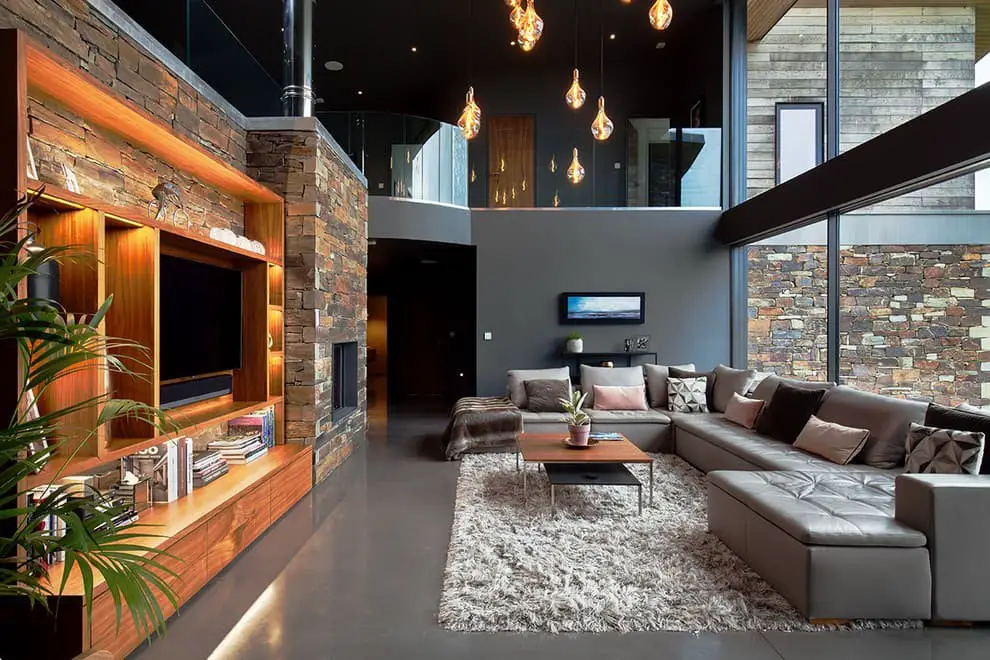
When considering walnut furniture, it’s crucial to keep the following factors in mind. Firstly, walnut being a dense wood requires high-quality craftsmanship to ensure the piece remains durable over time, avoiding the likelihood of premature wear or damage. Secondly, walnut furniture is often priced at a premium, making budget-friendly alternatives worth exploring for those on a tight budget.
Thirdly, the classic aesthetic of walnut pieces may not align with modern design preferences, prompting consideration of alternative styles. Lastly, the low-maintenance nature of walnut furniture means occasional dusting and polishing are sufficient to preserve its appearance, making it an attractive option for busy homeowners.
White.
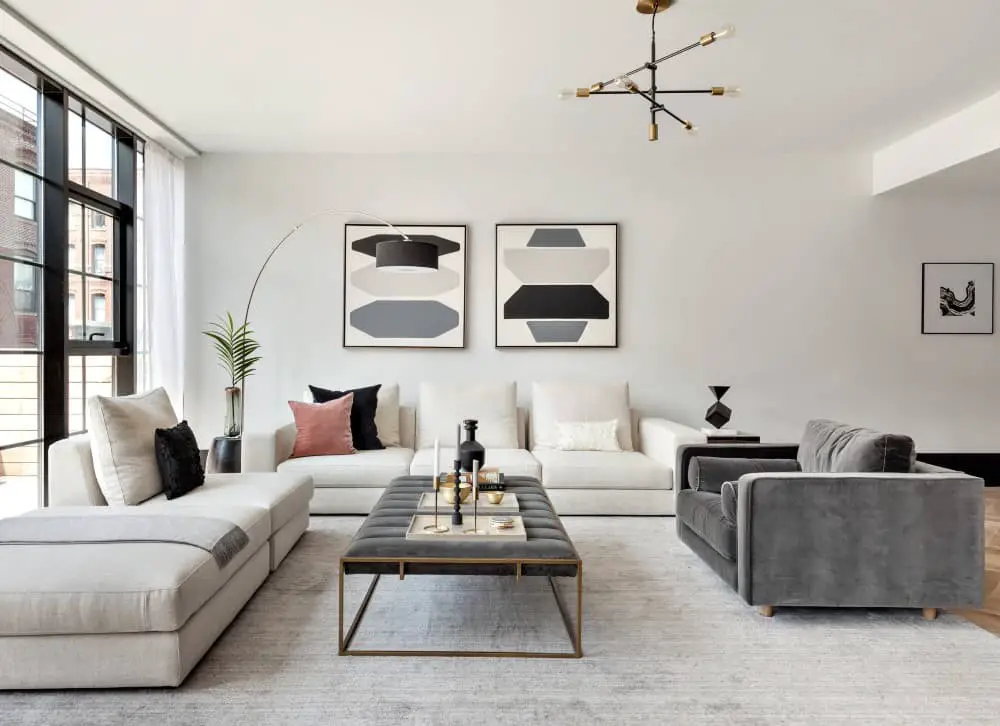
White is often touted as a versatile and timeless color that effortlessly complements various decorating styles. Its ability to create the illusion of larger spaces is particularly appealing, making it an excellent choice for smaller rooms. However, families with young children may find that white’s high-contrast quality accentuates even the tiniest imperfections, such as stains and scuff marks. For those seeking a crisp, clean aesthetic, though, white remains a dependable option.
What color furniture goes with light grey flooring?
When it comes to pairing furniture with light grey flooring, there’s no one-size-fits-all solution. However, some of the most popular color combinations include white, black, and brown pieces. For added visual interest, consider mixing and matching different hues to create a look that’s uniquely yours. The key is to ensure that your chosen furniture complements the light grey flooring, rather than overpowering it.
By making thoughtful choices, you can curate a space that’s both stylish and inviting.
What color furniture goes with dark grey flooring?
When it comes to creating contrast in your space, one effective way is to select furniture with lighter colors. This approach will create a visually appealing difference between pieces and add depth to the overall aesthetic. On the other hand, opting for darker furniture pieces can produce a cohesive, monochromatic look that exudes a sense of sophistication.
If you’re torn between these two extremes, a neutral option like black or white furniture can provide a harmonious connection between different design elements, ultimately tying the entire space together.
Does grey furniture go with grey floors?
The key to creating a harmonious space lies in finding the right balance between consistency and contrast. While a single shade of grey for both floors and furniture can produce a cohesive look, it’s not the only way to achieve visual appeal. In fact, mixing and matching different shades of grey can add depth and interest to your space.
For instance, you could pair a light grey floor with dark grey furniture or vice versa, allowing each element to stand out while still maintaining a sense of continuity.
Does grey flooring go with brown furniture?
While the perfect balance of grey flooring and brown furniture ultimately depends on various factors, including the specific shades used and personal taste, there are some general guidelines that can help you achieve a harmonious space. One approach is to juxtapose light grey flooring with dark brown furniture, which can create a sophisticated atmosphere. Alternatively, medium-toned grey flooring paired with chocolate brown furniture can produce a more understated contrast.
To add depth and visual interest, consider combining different textures, such as smooth grey floors with rough, rustic brown furniture or vice versa.
What color dining table with grey floors?
When it comes to pairing a dining table with grey floors, homeowners have several options to consider. One approach is to choose a white dining table, which can create a bright and airy atmosphere in the room. This contrast between the light-colored table and the darker grey floor can add visual interest and make the space feel more dynamic. Another option is to opt for a darker wood table, which can bring warmth and depth to the room.
Ultimately, the key to making a successful choice is considering the overall style of your space and how the dining table will fit into that aesthetic.
How to choose the furniture colors to go with gray flooring
When it comes to selecting furniture that harmonizes with gray flooring, there are several factors to consider. The first step is to analyze the undertones of your gray floors. If they have a cool tone, you’ll want to opt for furniture pieces with similar cool undertones. This will result in a visually cohesive space. Conversely, if your gray floors have warm undertones, it’s essential to choose furniture that shares these characteristics. By doing so, you’ll create a unified aesthetic.
Alternatively, you can experiment with mixing and matching different colors of furniture with your gray floors. This approach allows for the creation of a unique, eclectic atmosphere. However, it’s crucial to ensure that the chosen colors complement each other well, thereby maintaining visual harmony in the space.
What color of couch goes with light gray floors?
When it comes to selecting a couch color that complements your floors, you’re faced with a few options. One approach is to harmonize by matching the shade of your couch to the tone of your flooring. In this case, you could opt for either a light gray or dark gray couch to create a cohesive look. Alternatively, you can create visual interest by choosing a contrasting color that provides a nice juxtaposition.
For example, pairing a white couch with darker floors or a black couch with lighter floors can lead to a striking and modern aesthetic.
Conclusion
With gray flooring as the backdrop, selecting complementary furniture can be an exciting yet overwhelming task. The beauty lies in its versatility, allowing for a wide range of styles and colors to coexist harmoniously. While personal taste plays a significant role, some color combinations that work particularly well with gray floors include the classic pairing of white and black, as well as earthy tones like brown.
By introducing these contrasting hues, you can create visual interest and draw attention to the focal point – your stunning gray flooring. Ultimately, the perfect furniture choice will depend on your unique design aesthetic and the overall ambiance you wish to achieve in the room.

